Controlling invasive plants may seem like a thankless task, but it is essential for the well-being of our ecosystems. The techniques and timing for eradicating weeds and invasive plants vary according to species. Conducting research, whether through online searches, reviewing gardening guides, or consulting with fellow gardeners, is crucial to find the best removal strategies for success. And it’s time well spent!
Simply removing invasive plants falls significantly short of what is required to heal our planet. It is only through the thoughtful restoration and re-establishment of native plant communities that we can foster a more resilient and thriving ecosystem.
While a weed is simply defined as an unwanted plant, invasive species are non-native to the ecosystem and their presence causes (or is likely to cause) environmental or economic harm or harm to human health. Invasive plants can disperse, establish, and spread without assistance or disturbance. Because of this, they are much more problematic in natural ecosystems than typical weeds. Read more about invasive plants.
For managing the emergence of weeds and invasive plants, several strategies are available, each tailored to different types of plants and garden conditions. This brief overview touches on a range of physical techniques, from hand pulling and cutting to smothering and solarization, aimed at minimizing the impact of unwanted plants. However, it’s important to recognize that these methods represent just a sample of the myriad approaches to weed control.
Hand Pulling: while this is the most labor-intensive method of weed control, it is one of the most effective methods as it removes the whole plant, including the roots. It is important to do this before a weed goes to seed to prevent future weeds from sprouting. Hand pulling of large weeds should be exercised with caution to prevent excessive soil disturbance and injury to the gardener.
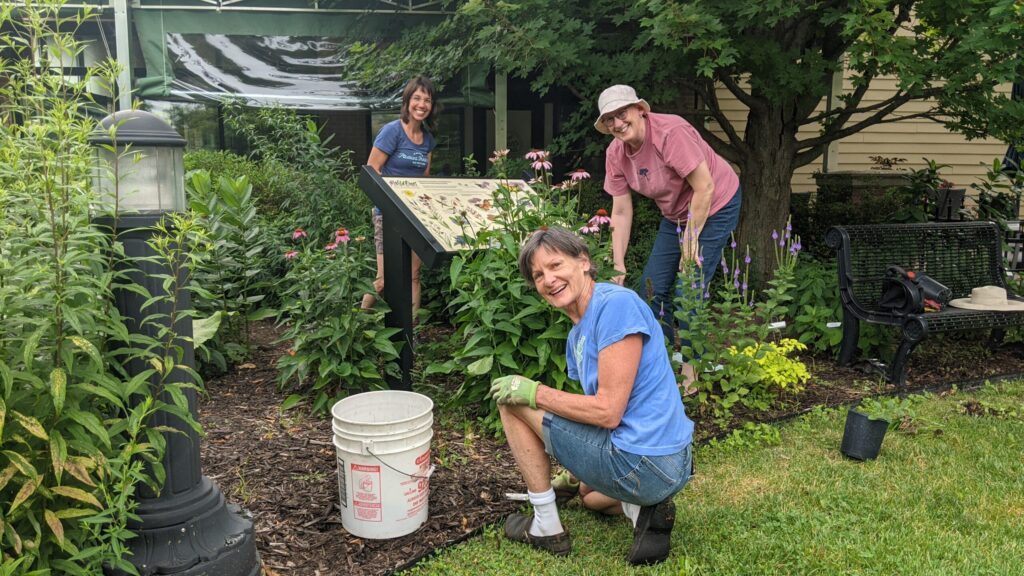
Cutting: for annual or biennial plants, cutting while blooming, but before going to seed, can be an effective method of control. Repeated cutting can also be an effective method of control for some perennial species.
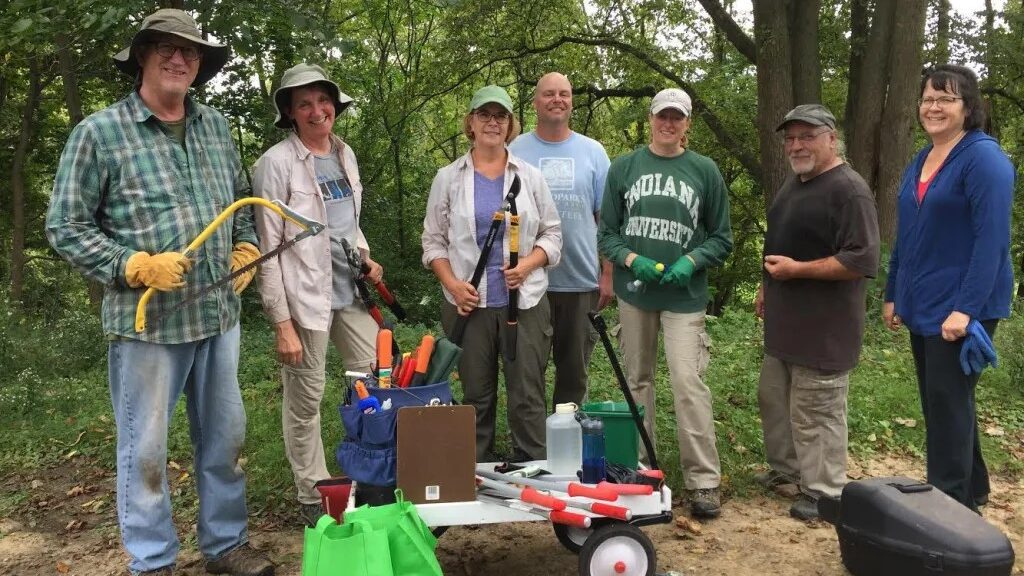
Smothering: Great for controlling weeds in a large area, covering soil with materials such as mulch, newspaper or cardboard is often effective.
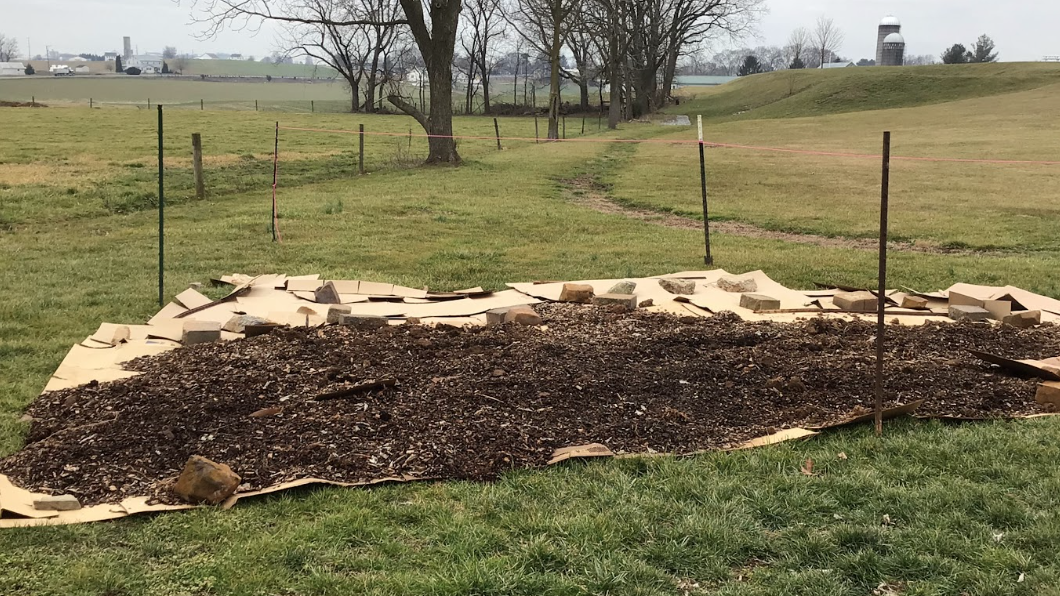
Solarization: Covering the soil with clear plastic over an extended period to kill weed seeds in the top “baked” layer of soil. Using plastic is less environmentally friendly than other methods. Applying transparent plastic to moist beds for short periods of time forces weed seeds in the top layer of soil to germinate; those seedling weeds can be easily pulled or hoed. Repeating this process can deplete the weed seed bank in the top layer of soil, reducing the garden’s future weed pressure.
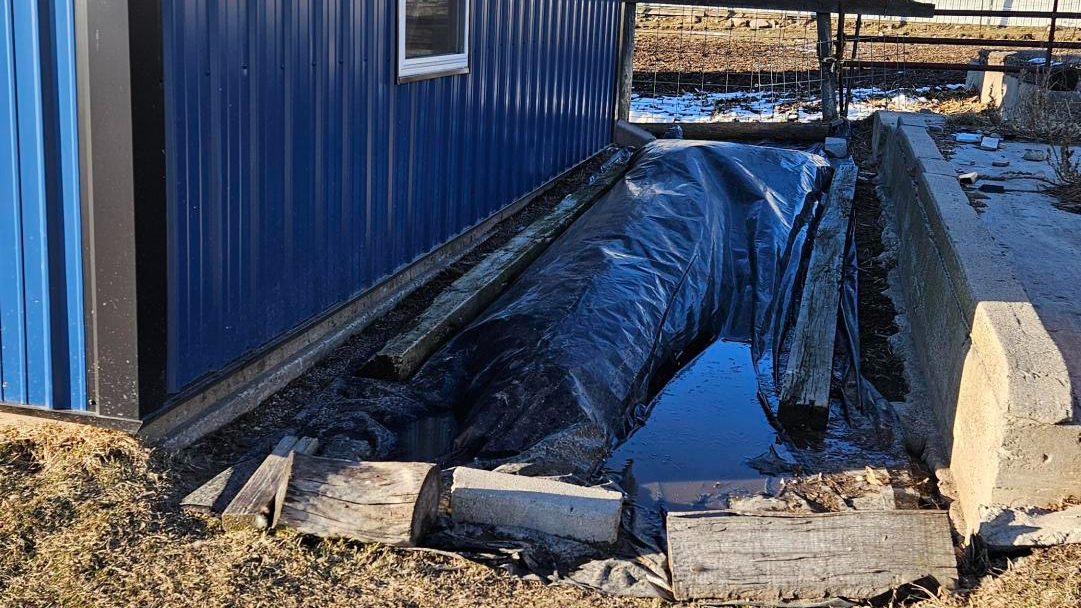
Cultivation: This can be an effective way to control a large area of weeds while also loosening the soil for planting. The downside to cultivation is the increased potential for soil erosion and the disturbance and destruction of the underground microbial community that plays a vital role in ecosystem health.
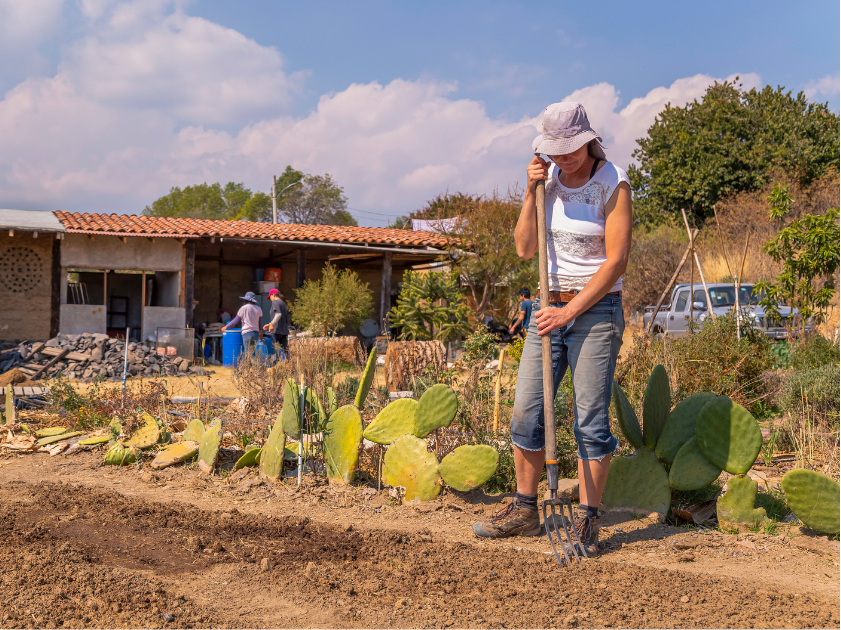
It is important to note that the effectiveness of these methods vary depending on the specific weed species, the size of the infestation, and the surrounding environment. Planting a dense native hedgerow upwind of a garden can reduce the volume of weeds seeds that blow into a space. Integrated weed management, combining several of these methods, is often the most successful approach.
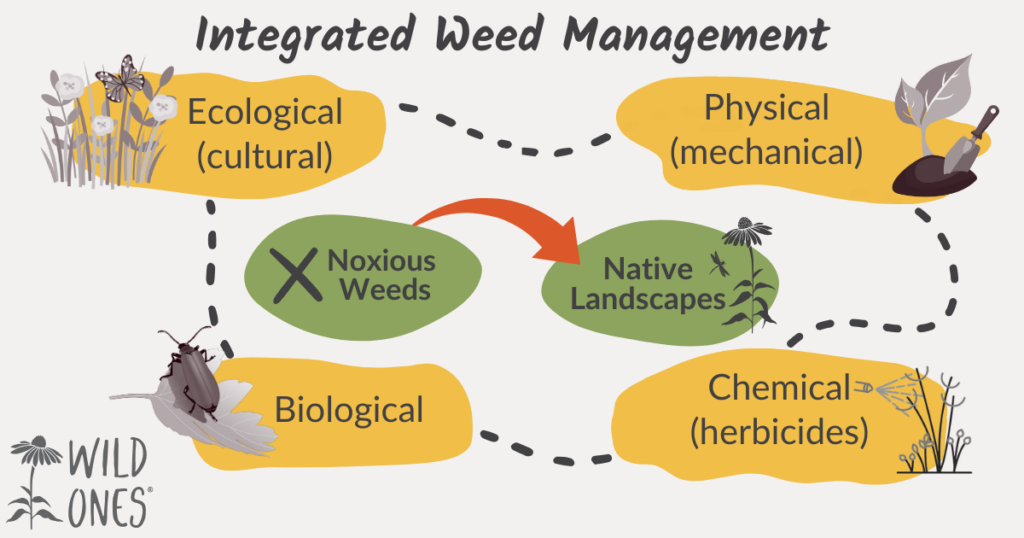
Chemical Control: Depending on the specific challenges and characteristics of your garden, targeted chemical control may be necessary. If you must resort to herbicide use, first research the efficacy and appropriate timing and methods for applications to target specific species. and recommendations through your state’s Department of Agriculture and the Environmental Protection Agency. Ensure you wear the right protective gear and understand the risks, as many methods of chemical control can have detrimental impacts to watersheds, ecosystems, and human health. Herbicide training and certification programs are available in all states. Also, consider the potential for drift to affect both your garden and neighboring properties, which could lead to significant fines in some states. Never apply herbicides on a windy day.
We recommend that people connect with fellow gardeners through their local Wild Ones Chapter to tap into shared knowledge and regional expertise. Connecting with others who have similar situations and local experts will make controlling weeds easier.
It’s important to note that simply removing invasive plants falls significantly short of what is required to heal our planet. It is only through the thoughtful restoration and re-establishment of native plant communities that we can foster a more resilient and thriving ecosystem. We must replace invasive plants with native plants to grow a healthier planet.

